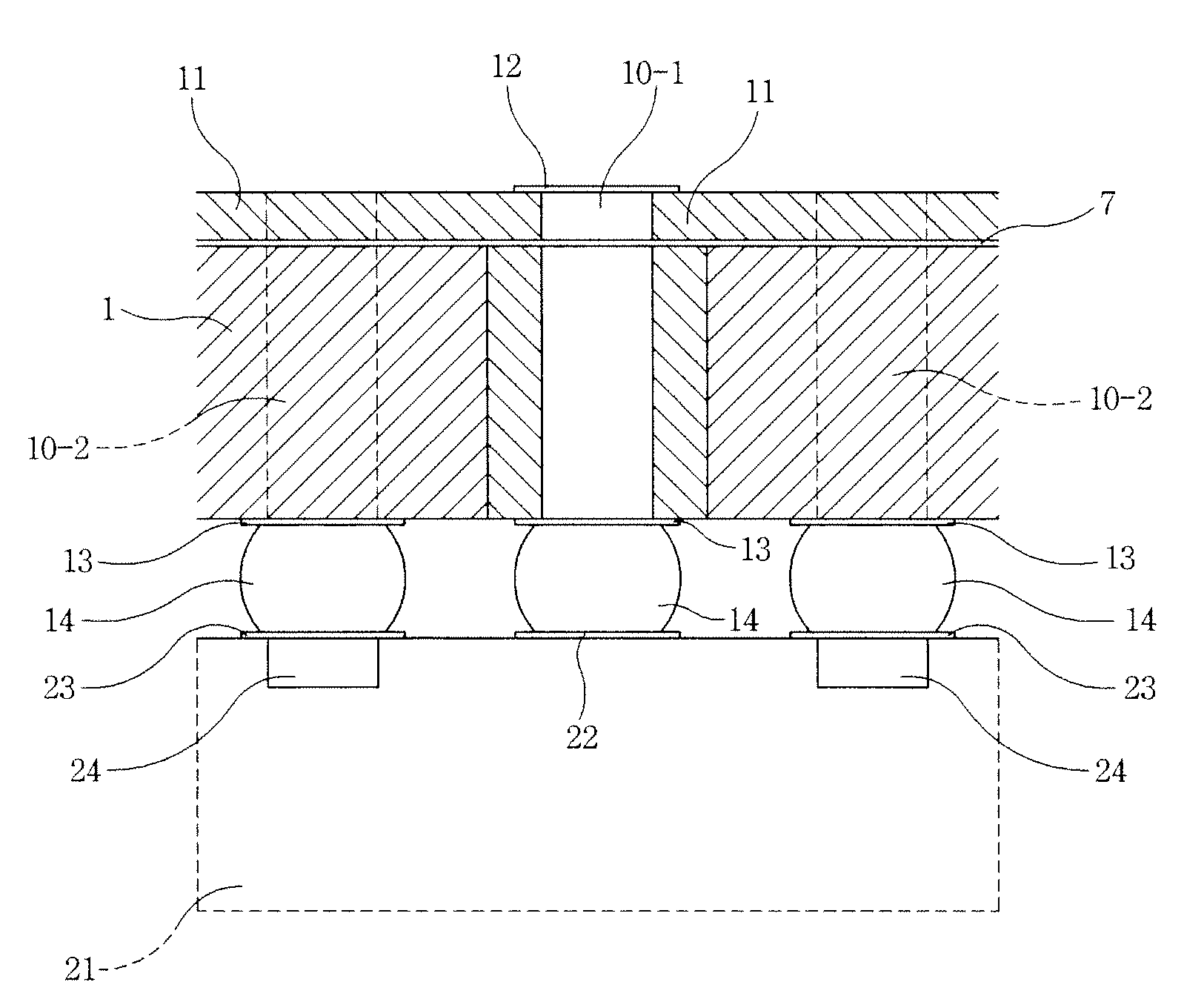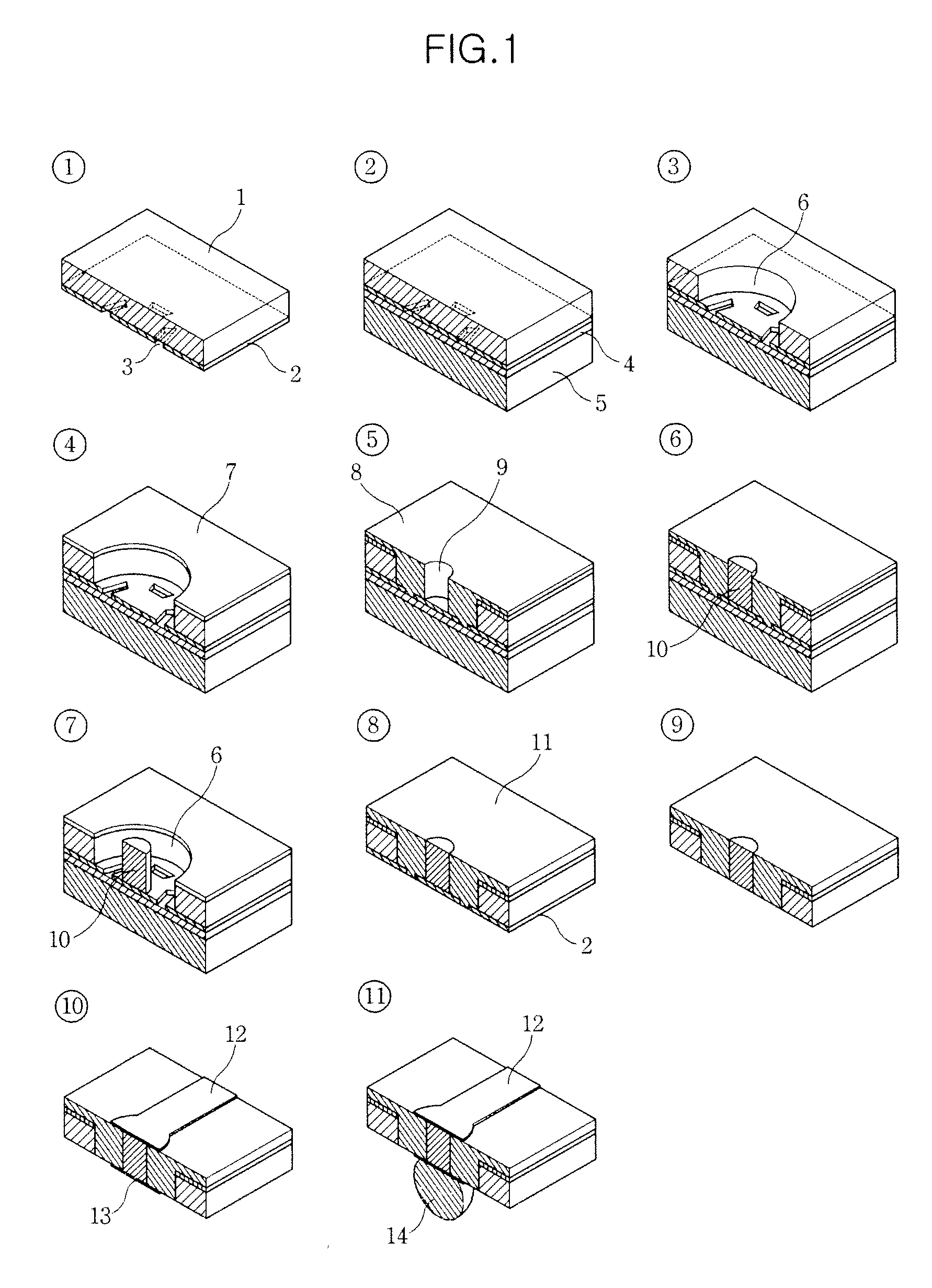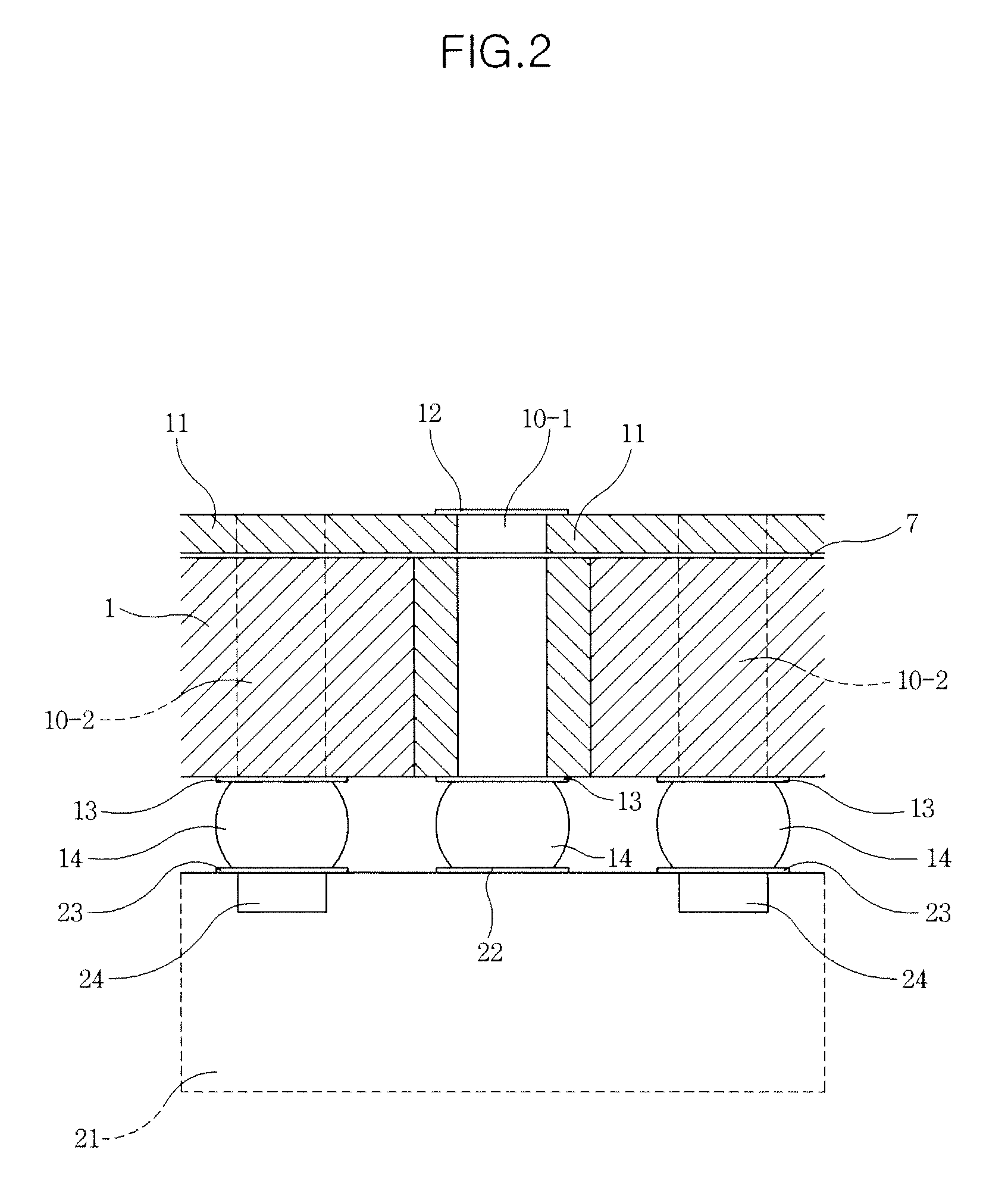Method of manufacturing stacked semiconductor package using improved technique of forming through via
a semiconductor and packaging technology, applied in semiconductor devices, semiconductor/solid-state device details, electrical devices, etc., can solve the problems of waveform distortion and electrical crosstalk, signal loss increase, and the inability to completely fill the via hole,
- Summary
- Abstract
- Description
- Claims
- Application Information
AI Technical Summary
Benefits of technology
Problems solved by technology
Method used
Image
Examples
Embodiment Construction
[0029]The invention is described more fully hereinafter with reference to the accompanying drawings, in which exemplary embodiments of the invention are shown. This invention may, however, be embodied in many different forms and should not be construed as limited to the is exemplary embodiments set forth herein. Rather, these exemplary embodiments are provided so that this disclosure is thorough, and will fully convey the scope of the invention to those skilled in the art. In the drawings, the relative sizes of layers and regions may be exaggerated for clarity, and like reference numerals denote like elements.
[0030]FIG. 1 shows a process of forming a through via having a thick insulating structure according to an exemplary embodiment of the present invention.
[0031]To begin with, a wafer 1 may be formed to a predetermined thickness. In the present specification, wafer refers to a semiconductor wafer or an insulating substrate. In an exemplary embodiment, the wafer 1 may be formed usi...
PUM
 Login to View More
Login to View More Abstract
Description
Claims
Application Information
 Login to View More
Login to View More - R&D
- Intellectual Property
- Life Sciences
- Materials
- Tech Scout
- Unparalleled Data Quality
- Higher Quality Content
- 60% Fewer Hallucinations
Browse by: Latest US Patents, China's latest patents, Technical Efficacy Thesaurus, Application Domain, Technology Topic, Popular Technical Reports.
© 2025 PatSnap. All rights reserved.Legal|Privacy policy|Modern Slavery Act Transparency Statement|Sitemap|About US| Contact US: help@patsnap.com



